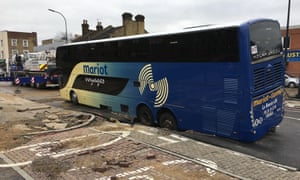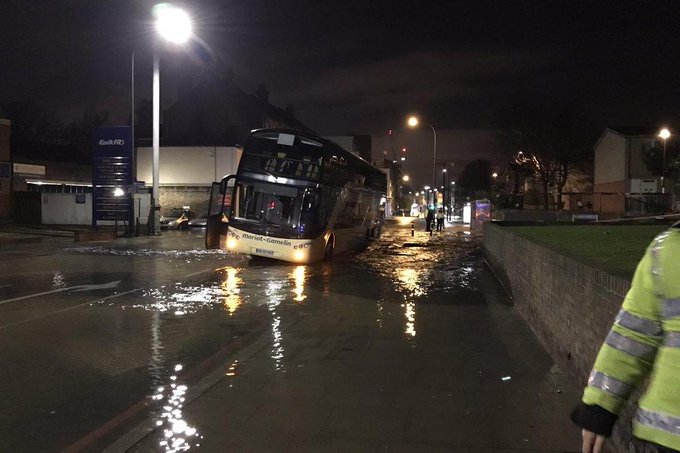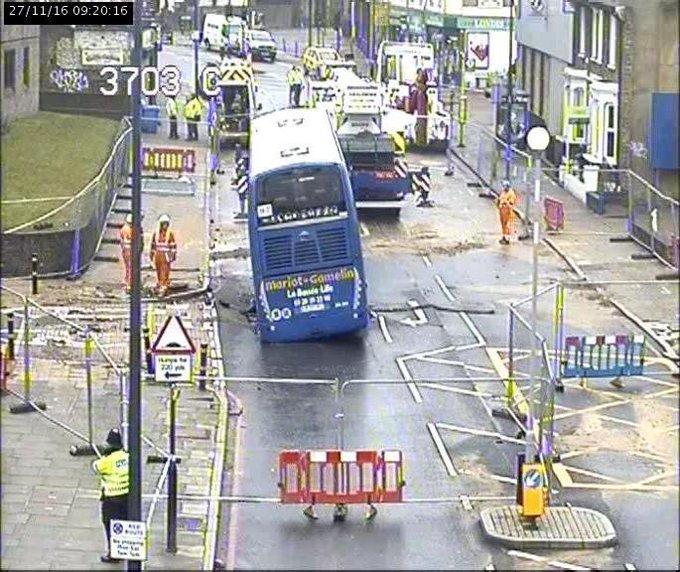Sinkhole swallows part of bus after flooding in south London
Passengers are evacuated and roads closed after burst water main turns Lewisham road ‘into a river’
Firefighters rescued passengers in south London after a sinkhole caused by major flooding swallowed part of a coach.
Onlookers said the road looked like a river after the hole opened on Lewisham’s Lee High Road on Saturday, following a burst water main. Footage on social media showed the emergency services dealing with the vehicle, which was stuck in several inches of water.
Lewisham flooding: Homes left without water after sinkhole opens and town centre left submerged dlvr.it/MlhQKT
Police declared a major incident, cordoned off roads and asked residents to avoid Lewisham town centre. Homes in the surrounding area were left without water and a temporary shelter was set up on Bonfield Road for those displaced due to flooding.
#Morningall #Lewisham
You may have woken up to a 'hole' lot of grief in Lee High Rd. Please avoid the area! #SgtBiddle
Thames Water said repairs were “complicated and taking longer than normal”.
Transport for London said the road closures meant 18 bus routes were on diversion on Sunday but that there were no excessive delays.
Sinkholes occur when water gradually dissolves soluble bedrock, forming a cavity under the ground over thousands of years. Loose sedimentary rock closer to the surface gradually falls into the hole, until the surface is no longer able to support itself and collapses.
South London was hit by a similar incident earlier this year when a 13ft sinkhole opened above a sewer in Forest Hill, causing major disruption to commuters due to damage to rail tracks.
More sinkholes have been appearing around the UK in recent years. In 2014, scientists recorded a five-fold increase in the number of sinkholes occurring over a particularly rainy winter.
Although sinkholes are closely linked to rainfall, humans can exacerbate the process. Anything that has the potential to divert water to weak points beneath the earth will accelerate the creation of sinkholes.
https://www.theguardian.com/world/2016/nov/27/sinkhole-swallows-part-of-bus-after-flooding-in-lewisham-south-london








No comments:
Post a Comment